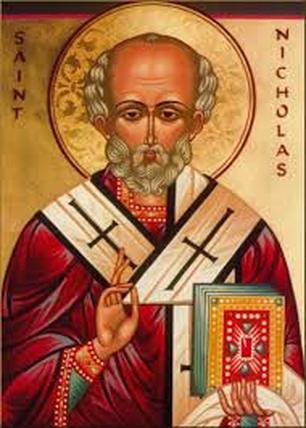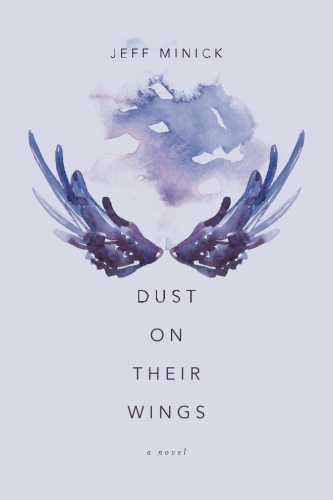Yes, Virginia—and everyone else, young and old—there is a Santa Claus.
On the second Sunday of Advent, Father Jerome Fasano, the priest at Saint John the Baptist here in Front Royal, began his homily by chiding parents for telling their children there was no Santa Claus. Quite the opposite is true, maintained the good Father.
On the second Sunday of Advent, Father Jerome Fasano, the priest at Saint John the Baptist here in Front Royal, began his homily by chiding parents for telling their children there was no Santa Claus. Quite the opposite is true, maintained the good Father.
As Father Fasano pointed out, Santa Claus is in reality a knock-off of Saint Nicholas, a bishop who lived around the year 280 A.D. in Turkey. (The name “Santa Claus” derives from Sinterklaas, which is a shortened form of Saint Nicholas in Dutch). From an early age, Nicholas lived a pious life, winning renown for his kindness and faith. He became a monk and a priest, and like the uncle who helped raise him, eventually became the local bishop. He attended the Council of Nicaea, which gave the Church the Nicaean Creed. Tradition has it that Bishop Nicholas became so inflamed by the heretic Arius who was in attendance that he punched him in the face.
Saint Nicholas was famous for his generosity and secret gift-giving. In the best known tale illustrating these acts, Nicholas heard of three daughters who, lacking a dowry, might by necessity be sold into slavery or prostitution. He collected a small bag of gold and lowered it down the chimney, where the father found it the next morning. Another story tells of Nicholas aboard a ship in a storm, praying for relief for the sailors from the fierce winds and crashing waves. The storm ended, and the saint’s prayers revived a sailor who had fallen from a mast and was believed dead.
So what does all this have to do with Santa Claus?
The Catholic Church then and now has professed a “communion of the saints.” This communion means that the souls in heaven can pray for those on earth and that the souls on earth can in turn ask for the help of their celestial comrades.
So in that sense St. Nicholas—Santa Claus—is not only very much alive, but also can serve as a friend in heaven to the faithful on earth.
And though our man with the big belly and the reindeer is a far cry from the Saint Nicholas of the third century, he still bears some of the marks of the saint. He dresses in Bishop’s red; he has the white beard attributed to Saint Nicholas; his clothes are trimmed in white just as were the bishop’s. Like Saint Nicholas, he is famous for kindness and for his secret acts of generosity.
Behind all that Christmas trimming and hoopla—the department store Santas, the Kris Kringle greeting cards, statues, and tree ornaments, the flying reindeer and elves and North Pole toy shop, the tubby man in red popping up and down the chimney—stands Saint Nicholas.
Saint Nicholas, pray for us.
P.S. If you’re listening, Saint Nicholas, for Christmas I would like peace on earth. If you can’t arrange that, I would take $20,000 in small, unmarked bills.
Saint Nicholas was famous for his generosity and secret gift-giving. In the best known tale illustrating these acts, Nicholas heard of three daughters who, lacking a dowry, might by necessity be sold into slavery or prostitution. He collected a small bag of gold and lowered it down the chimney, where the father found it the next morning. Another story tells of Nicholas aboard a ship in a storm, praying for relief for the sailors from the fierce winds and crashing waves. The storm ended, and the saint’s prayers revived a sailor who had fallen from a mast and was believed dead.
So what does all this have to do with Santa Claus?
The Catholic Church then and now has professed a “communion of the saints.” This communion means that the souls in heaven can pray for those on earth and that the souls on earth can in turn ask for the help of their celestial comrades.
So in that sense St. Nicholas—Santa Claus—is not only very much alive, but also can serve as a friend in heaven to the faithful on earth.
And though our man with the big belly and the reindeer is a far cry from the Saint Nicholas of the third century, he still bears some of the marks of the saint. He dresses in Bishop’s red; he has the white beard attributed to Saint Nicholas; his clothes are trimmed in white just as were the bishop’s. Like Saint Nicholas, he is famous for kindness and for his secret acts of generosity.
Behind all that Christmas trimming and hoopla—the department store Santas, the Kris Kringle greeting cards, statues, and tree ornaments, the flying reindeer and elves and North Pole toy shop, the tubby man in red popping up and down the chimney—stands Saint Nicholas.
Saint Nicholas, pray for us.
P.S. If you’re listening, Saint Nicholas, for Christmas I would like peace on earth. If you can’t arrange that, I would take $20,000 in small, unmarked bills.






 RSS Feed
RSS Feed